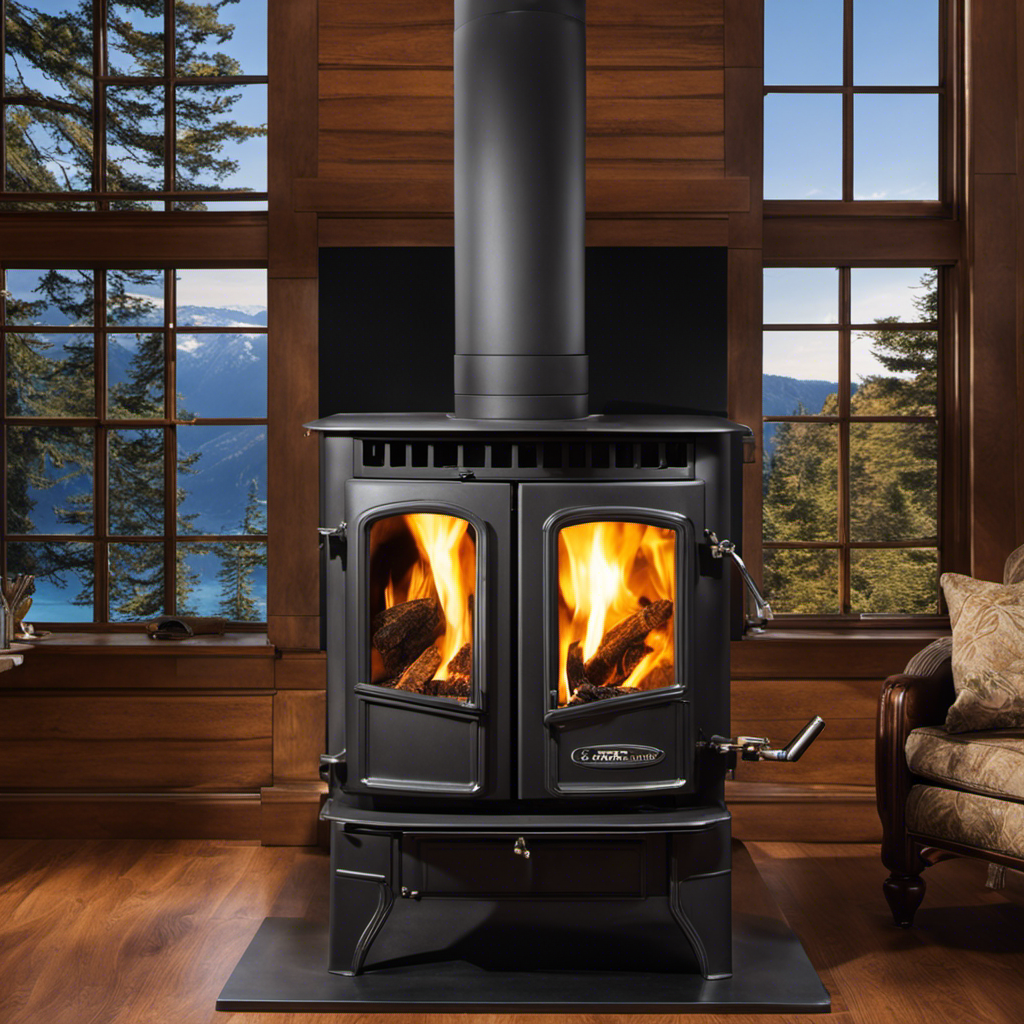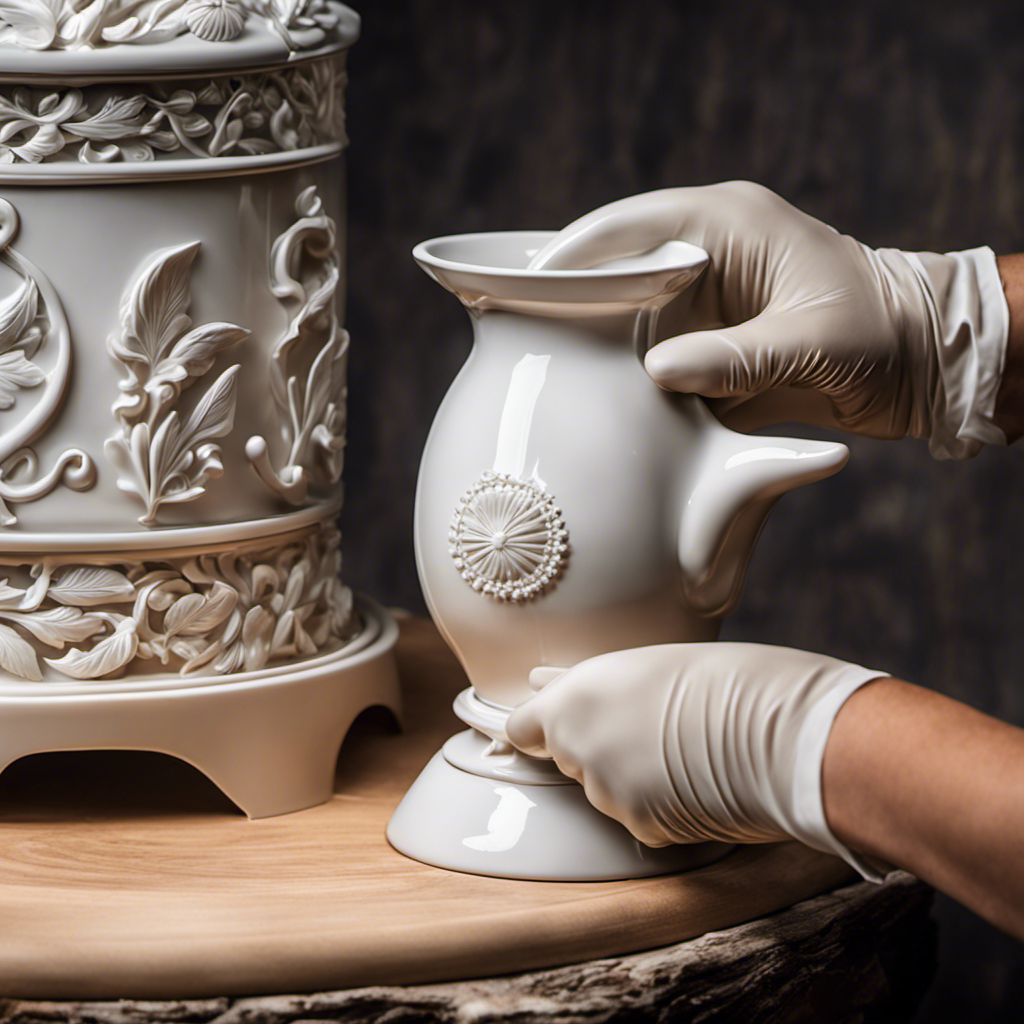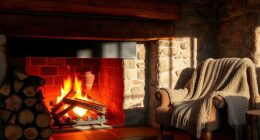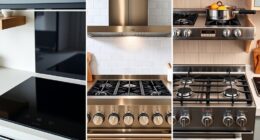Hello there!
So you’re curious about the inner workings of a wood stove, huh? Well, let me enlighten you.
This little marvel of engineering is made up of various parts working together to keep you warm and cozy. From the firebox to the damper, each component plays a crucial role in ensuring an efficient burn and proper ventilation.
So, buckle up and get ready to dive into the fascinating world of wood stove anatomy!
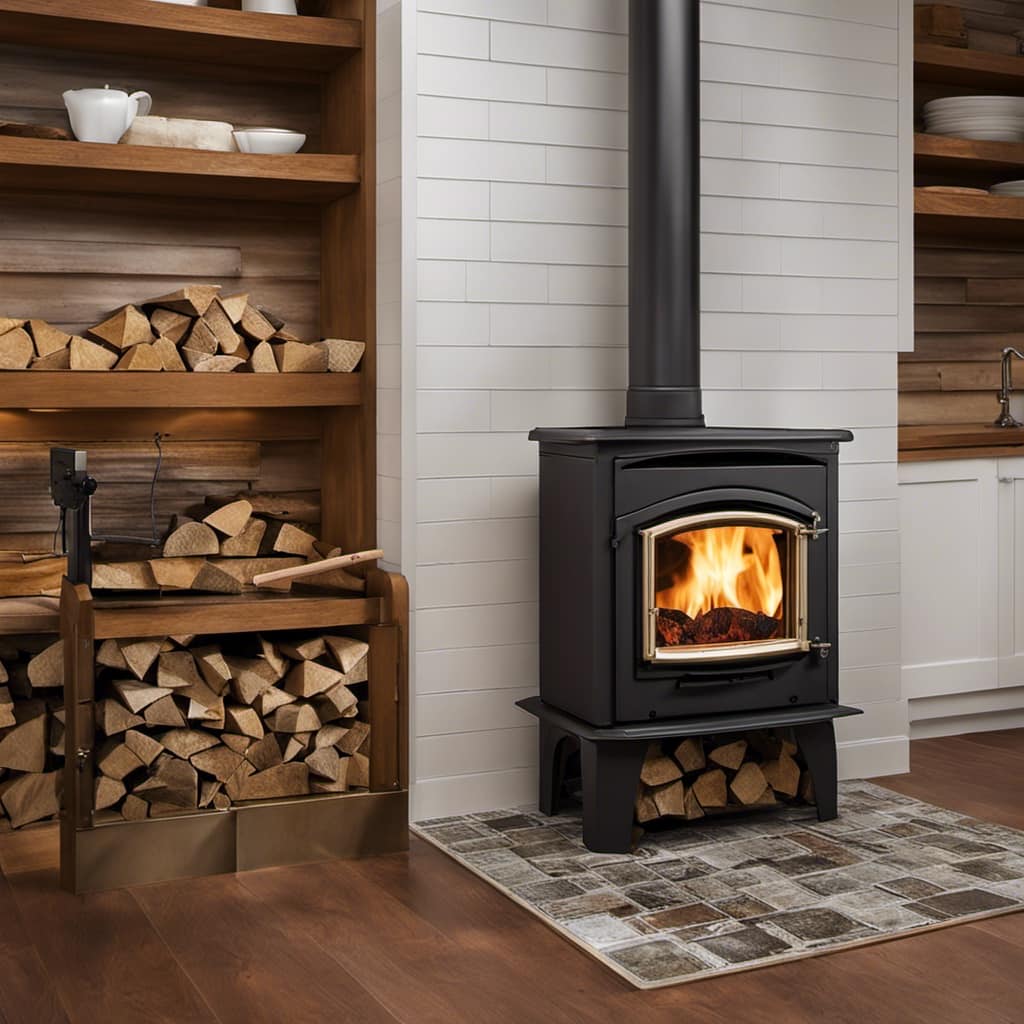
Key Takeaways
- The firebox is made of high-quality steel or cast iron and needs regular cleaning and maintenance to prevent heat loss and maximize combustion efficiency.
- The baffle plate redirects smoke and gases to increase heat transfer and efficiency, and regular cleaning is necessary to remove soot or creosote buildup.
- The damper regulates airflow and heat output and requires regular maintenance to ensure efficient heat output and prevent the buildup of harmful gases.
- The flue and chimney are essential for safe and efficient wood stove operation and require regular maintenance to prevent creosote buildup and chimney fires.
The Firebox
The firebox is where I load the wood and start the fire in my wood stove. It’s one of the most important components of the stove, responsible for containing the fire and ensuring efficient heat transfer. Firebox construction is crucial for the overall performance and longevity of the stove.
It’s typically made of high-quality steel or cast iron, known for their durability and heat resistance. The firebox is designed with proper insulation to prevent heat loss and maximize combustion efficiency.
Proper firebox maintenance is essential to keep the stove working optimally. Regular cleaning and removal of ash and soot buildup is necessary to prevent blockages and maintain good airflow. Additionally, inspecting the firebrick lining and replacing any damaged bricks is important to ensure proper heat distribution and prevent damage to the firebox.
The Baffle Plate
I really like how the baffle plate helps improve the efficiency of my wood stove. The baffle plate is a crucial component that sits above the firebox and below the flue pipe. Its design is essential for achieving optimal combustion and heat distribution.

The main purpose of the baffle plate is to redirect the smoke and gases produced during combustion, forcing them to travel a longer path before exiting through the flue. This extended path allows for more heat transfer from the gases to the stove, increasing efficiency.
To ensure the baffle plate functions properly, regular maintenance is necessary. Cleaning the baffle plate regularly is important to remove any soot or creosote buildup that can hinder its performance. With proper baffle plate maintenance and design, the wood stove can operate at its best efficiency, providing economical and effective heat.
Now, let’s move on to discuss the next component, the damper.
The Damper
With a properly functioning damper, I can easily control the airflow and heat output of my wood stove. Dampers are essential components that regulate the flow of air in a wood stove, allowing for efficient combustion and heat distribution. There are different types of dampers, including primary and secondary dampers, each serving a specific purpose.
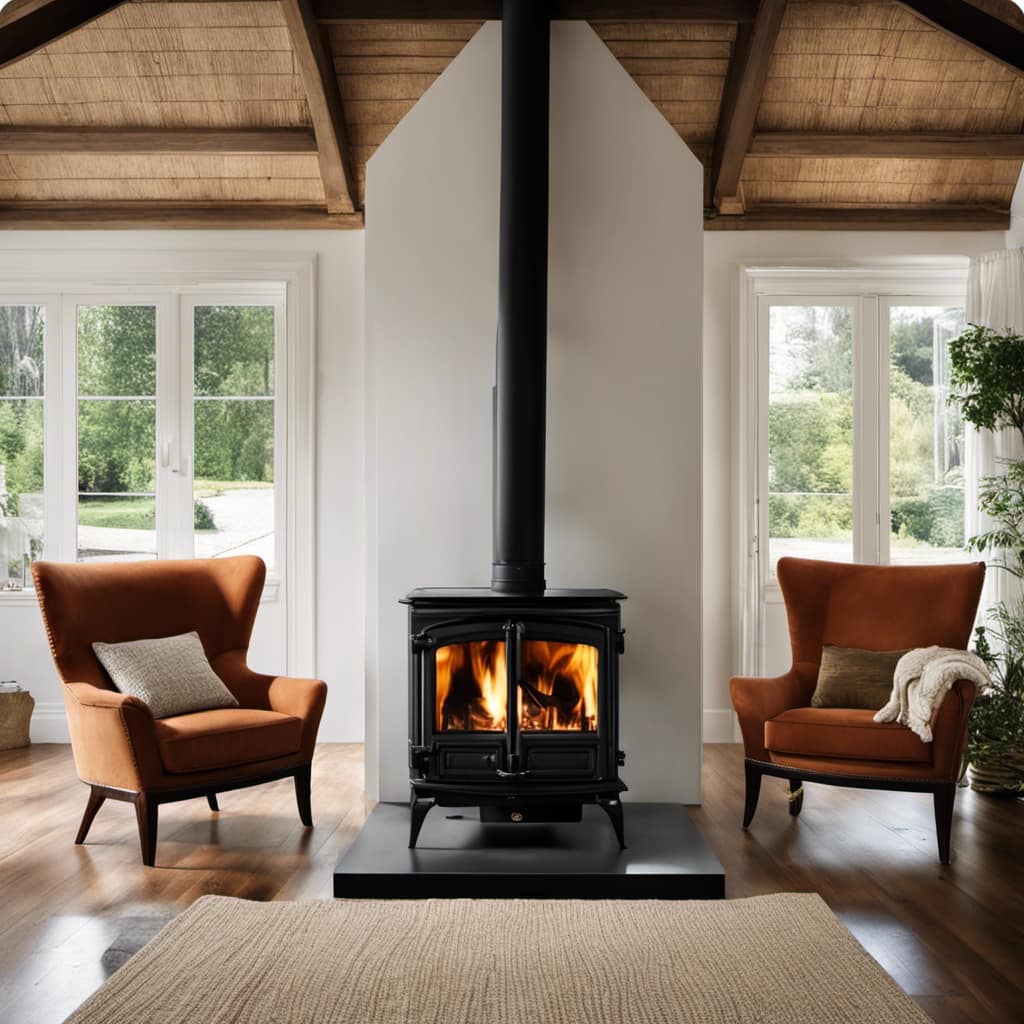
The primary damper, located near the stove’s inlet, controls the amount of air entering the stove, while the secondary damper, situated near the flue, manages the exhaust gases’ exit. Regular maintenance of dampers is crucial to ensure optimal performance. This includes cleaning any debris or soot buildup and checking for any signs of damage or wear.
Proper damper operation is of utmost importance as it not only ensures efficient heat output but also promotes safety by preventing the buildup of harmful gases within the stove and chimney.
The Flue
Located above the stove, the flue safely channels the exhaust gases out of the house. The flue is an essential component of a wood stove system, responsible for efficient and safe operation. Proper flue installation is crucial to ensure the gases are vented correctly.
Regular flue maintenance is necessary to prevent build-up of creosote, a highly flammable substance that can lead to chimney fires. When it comes to flue installation, it’s important to consider the following:
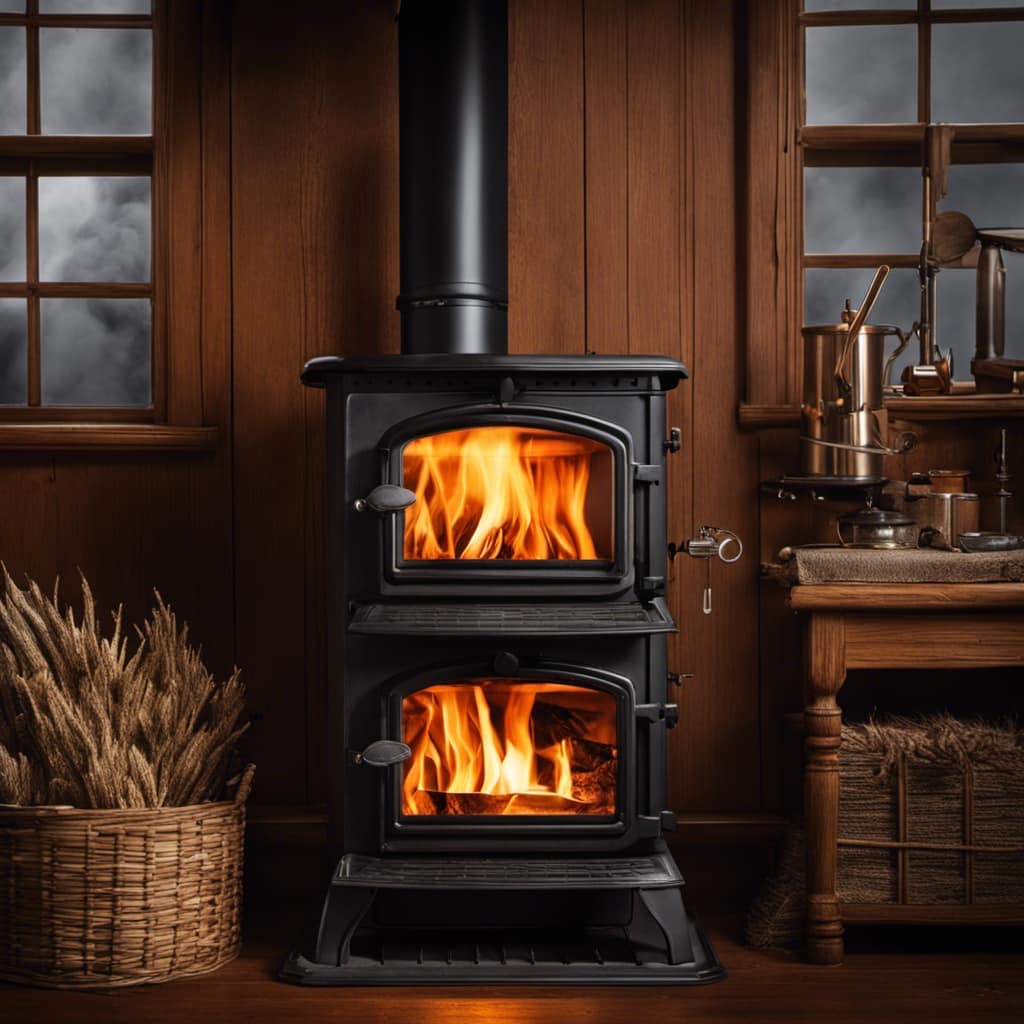
- Proper sizing and positioning of the flue pipe.
- Adequate clearance from combustible materials.
- Use of high-quality, heat-resistant materials.
- Sealing of any gaps or leaks in the flue system.
- Regular inspection and cleaning to remove creosote buildup.
With proper flue installation and regular maintenance, the wood stove can operate safely and efficiently.
Now, let’s move on to other components of the wood stove system.
Other Components
One important component to consider in the wood stove system is the heat shield, which helps protect the surrounding walls from excessive heat. It is crucial to install a heat shield properly to ensure safety and prevent any potential damage. Another essential aspect of wood stove maintenance is chimney installation. A well-designed chimney system allows for efficient exhaust and minimizes the risk of smoke intrusion. Proper chimney installation ensures that the wood stove operates at its maximum efficiency while eliminating any potential hazards. To summarize the key components of a wood stove system, I have provided a table below:
| Component | Function | Importance |
|---|---|---|
| Heat shield | Protects surrounding walls from heat | Crucial for safety |
| Chimney | Facilitates exhaust and prevents smoke | Ensures efficient operation |
| Stove maintenance | Ensures optimal performance and safety | Essential for long-term use |
Frequently Asked Questions
How Do I Clean and Maintain a Wood Stove?
To clean and maintain a wood stove, I use various cleaning techniques and maintenance tips. Regularly removing ashes, cleaning the glass door, and inspecting the chimney are all essential for optimal functioning and safety.
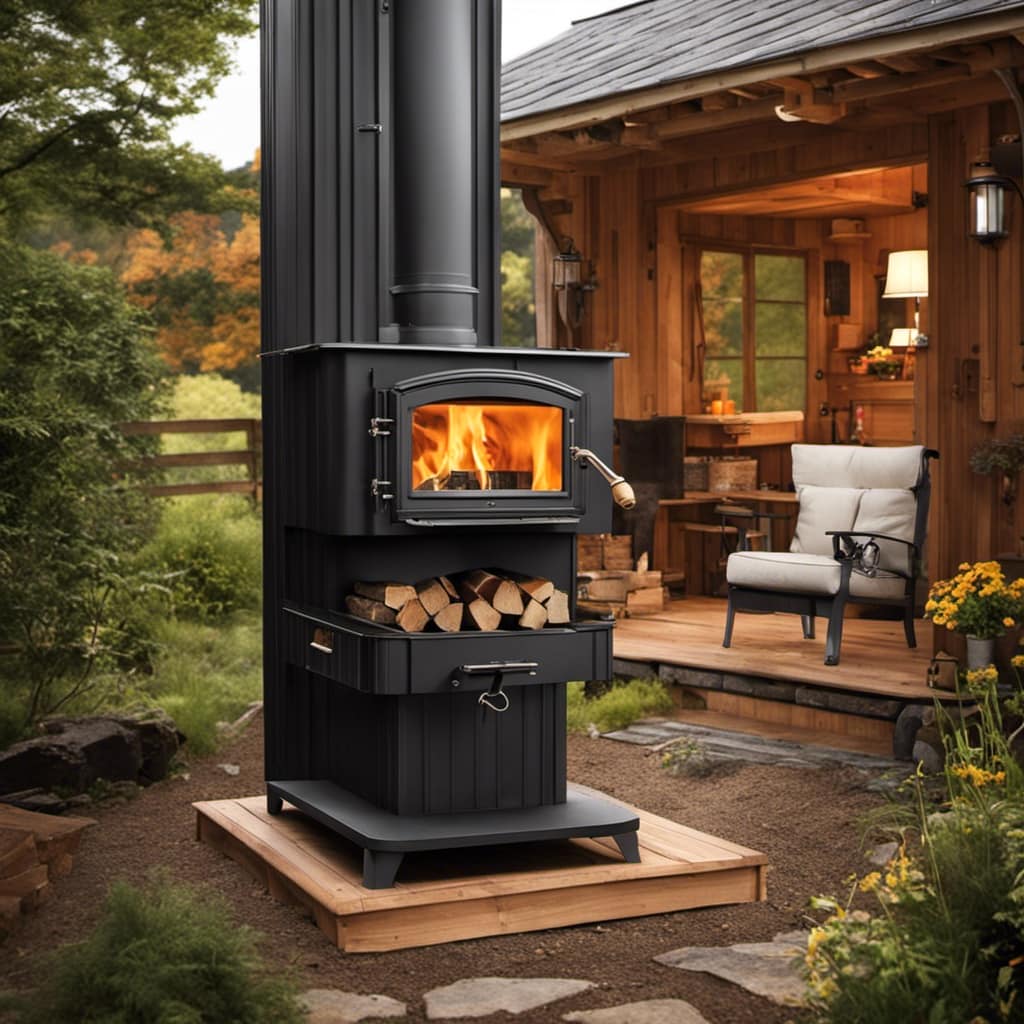
What Are the Safety Precautions to Take When Using a Wood Stove?
When using a wood stove, it’s crucial to prioritize safety. Follow these safety tips: ensure proper ventilation, keep flammable items away, use a fireproof mat, and regularly inspect and clean the stove.
Can a Wood Stove Be Used as the Primary Heating Source for a Home?
Using a wood stove as the primary heating source for a home can be cost-effective and environmentally friendly. However, proper ventilation and safety precautions are necessary when installing it as the main heating system.
What Kind of Wood Should Be Used in a Wood Stove?
When it comes to using a wood stove, it’s important to know the types of firewood suitable for efficient burning. Properly seasoned firewood is key to avoiding creosote buildup and ensuring optimal performance.
Are There Any Regulations or Permits Required for Installing a Wood Stove?
Yes, there are regulations and permits required for installing a wood stove. It is important to follow these guidelines to ensure safety and compliance with local building codes and fire regulations.
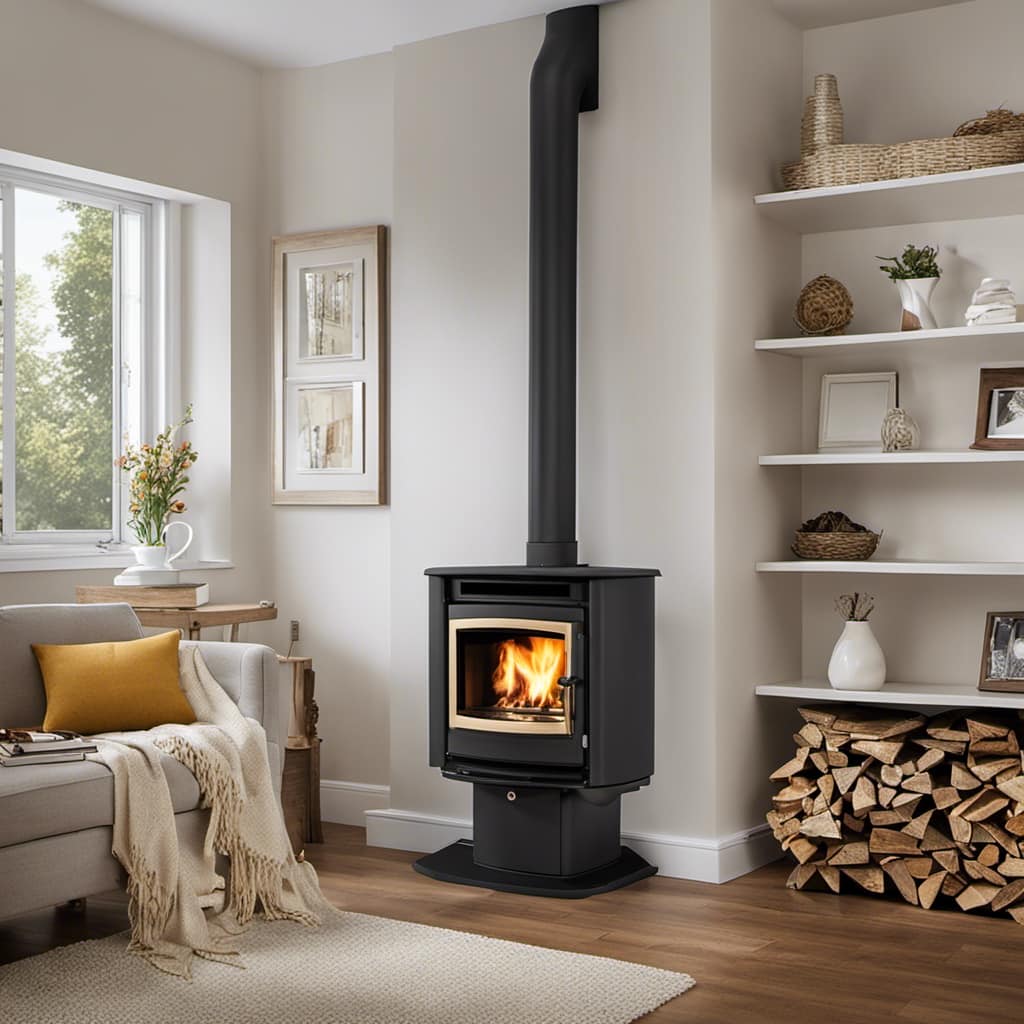
Conclusion
In conclusion, a wood stove consists of several essential parts that work together to ensure efficient and safe operation.
From the firebox, where the wood is burned, to the baffle plate and damper, which control the airflow, and the flue, which directs the smoke outside, every component plays a crucial role.
Interestingly, studies show that wood stoves can achieve an energy efficiency rating of up to 80%, making them a sustainable and cost-effective heating option for many households.
Growing up surrounded by the vast beauty of nature, Sierra was always drawn to the call of the wild. While others sought the comfort of the familiar, she ventured out, embracing the unpredictable and finding stories in the heartbeat of nature.
At the epicenter of every remarkable venture lies a dynamic team—a fusion of diverse talents, visions, and passions. The essence of Best Small Wood Stoves is crafted and refined by such a trio: Sierra, Logan, and Terra. Their collective expertise has transformed the platform into a leading authority on small wood stoves, radiating warmth and knowledge in equal measure.





